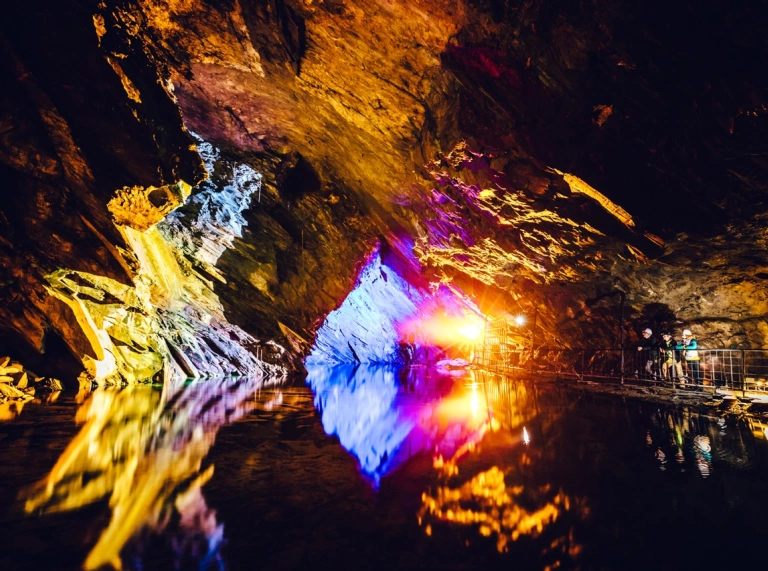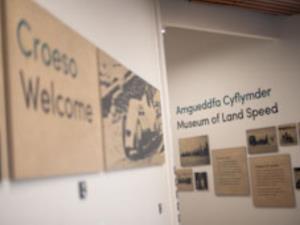Coastal castles
Anyone that built a fortress in the 13th century knew that a clear vista of the sea was an essential factor in castle location, since all manner of attacks might come your way from the coast. Situated in North East Wales, Flint Castle was the first of English king Edward I’s ‘Iron Ring’ of fortresses, designed to subdue the Welsh. Not as impeccably preserved as his other creations, Flint nevertheless boasts oodles of atmosphere and a rich history – it famously features in Shakespeare’s Richard II, as the setting of Richard II’s capture.
Continuing around the coast of North Wales takes in a quartet of Edward I-built castles: Conwy, Beaumaris, Caernarfon and Harlech which, together with Conwy Town Walls, form a UNESCO World Heritage Site. All four are imposing, mighty, ‘proper’ castles – the kinds replicated in Lego when you were a kid, with concentric towers and ‘walls within walls’ structures; indeed, Beaumaris is often referred to as the ‘most technically perfect’ castle in Britain. All four castles are open to visitors and regular are events held at each.


Another North Wales gem is Castell Cricieth (Criccieth Castle), one of the most sought-after and fought-after fortresses in the country. Llywelyn the Great originally built it, then Edward I got a piece of the action and added a few home improvements – special tower for stone-throwing engines, anyone? – before Owain Glyndŵr captured and burnt much of the property in the early 15th century, in what was the last major Welsh rebellion against the English. It’s not hard to see why it was so desirable – it's situated on a headland between two beaches, surrounded by water. Visit for spectacular sea views.



Pembrokeshire is home to everything from early motte and bailey castles to grand bishop’s fortified palaces. Manorbier is one of the best by the sea – described by medieval writer Gerald of Wales as ‘the pleasantest spot in Wales’. The Norman baronial residence is perched overlooking a beautiful beach and has numerous stairs, towers and battlements you can explore, plus gorgeous and tranquil walled gardens. Another castle to have changed hands between the Normans and the Welsh is Llansteffan in Carmarthenshire, whose spot overlooking the sand-flats and mouth of the River Twyi is as picturesque as they come. This one began as an earth-and-timber creation, becoming a powerful masonry castle that was also briefly held by Owain Glyndŵr’s supporters in 1405-06.

Historic houses by the sea – with glorious gardens…
On the shores of the Menai Strait is National Trust property Plas Newydd House & Gardens, famed for its Rex Whistler association and featuring an impressive mural by the artist and exhibition of his works. This was a mansion built with an eye for views – across the Menai Strait are the atmospheric mountains of Eryri (Snowdonia). There’s a woodland walk, an Australasian arboretum, rhododendrons in the summer and hydrangeas in the autumn – this is a house for all seasons.

Heading southwards, on the Llŷn Peninsula is enchanting Plas yn Rhiw, also looked after by the National Trust. The house has a charming history; rescued from neglect by the three Keating sisters in 1938, it was lovingly restored and is peppered with artworks by its former residents and their guests, with architectural features inspired by Sir Clough Williams-Ellis (of Portmeirion fame). The gardens give way to jaw-dropping views over Llŷn, with many romantic nooks and crannies to enjoy a picnic or quiet moment.
Heading further south still, don’t miss Llanerchaeron, yet another National Trust gem close to the coast. Llanerchaeron is a fantastic example of the early work of architect John Nash, who went on to design parts of Buckingham Palace. Designed in the 18th century, the villa was unaltered for 200 years and has its own service courtyard with dairy, laundry, brewery and salting house, giving a fascinating 'upstairs, downstairs' experience. The walled gardens are a dreamy place for a wander.
Continuing south-west to Pembrokeshire is a far more historic ‘historic home’: Castell Henllys Iron Age Fort! Archaeologists have been excavating here for two decades, leading to the reconstruction of thatched Iron Age buildings on their original foundations. Set in thirty acres of woodland and picturesque river meadows, Castell Henllys is a fabulous diversion ten minutes’ drive from the coast, with sculpture trails and Iron Age pigs (!) to admire, not to mention the ‘Old Roundhouse’, the longest standing reconstructed Iron Age roundhouse in Britain.

Living history
Like to get up and close with heritage – enjoying choral music in a centuries-old cathedral or even partying at an architectural landmark village? Luckily for you, in Wales, you can!
There has been a church on the site of St Davids Cathedral in Pembrokeshire since the sixth century and prayers and worship have been a part of this venue for 1500 or more years. Located in Britain’s smallest city, St Davids, the Cathedral was so important in the 12th century that the then Pope declared that two pilgrimages to St David's were equivalent to one pilgrimage to Rome – and three were equivalent to one to Jerusalem! Today, the Cathedral remains open to visitors and worshippers, as well as lovers of music when, for ten days in May and June, the fantastic St Davids Cathedral Festival brings classical and contemporary music to the heart of West Wales.


Explore the magical village of Portmeirion in North Wales. Sir Clough Williams-Ellis spent fifty years lovingly creating his vision of an Italianate village in coastal North Wales, with the hotel opening in 1926 and going on to host artists, royalty, politicians and tycoons, as well as noted authors and playwrights including HG Wells, George Bernard Shaw and Noël Coward.


Back to the sixth century – and sites of religious interest: St Trillo’s Chapel, which sits on the foreshore at Rhos-on-Sea, dates back around 1500 years and has room for about six worshippers, but is still in use today. Britain’s smallest chapel, it is on the site of a pre-Christian, sacred holy well, over which the altar is built – and whose water has been used in baptisms in the parish.


Interested in Wales’ fascinating slate-mining heritage? Head inland from the busy harbour town of Porthmadog aboard the historic Ffestiniog Railway to Blaenau Ffestiniog, and explore Zip World Llechwedd, which tell the living history of Welsh slate mining throughout the 1800s via a Deep Mine Tour, an exciting ‘Quarry Explorer’ off-road adventure and hands-on slate workshops. Fancy something completely different? Zip World Llechwedd Adventures and Bounce Below are adrenalin-pumping adventures that have seen the slate mines repurposed for thrilling zip-line and trampolining experiences!


Legends and stories
All historical landmarks have a story behind them, but some have entered into the realm of ‘legend’. St Govan’s Chapel is one such example; the splendidly-sited hermit’s cell, built into a cliff near Bosherston in Pembrokeshire, is reached by a set of very steep steps. Legend has it that if you count the number of steps going down, it will never be the same as the number going up again!
If swashbuckling adventure tales are your thing, you’ll be delighted to find out that many of the most notorious pirates in history are of Welsh origin. The most successful pirate of all time hailed from Pembrokeshire too – Little Newcastle, near Fishguard, to be precise. Bartholomew Roberts, aka 'Barti Ddu' or ‘Black Bart’, who was known for his distinctive scarlet coat, wasn’t your stereotypical swashbuckler – he held church services aboard his ship and drank tea rather than rum. Bart plundered more than 400 vessels in his lifetime, but the coat was his eventual undoing – being an easy target, Bart was shot, realising his own prediction: ‘A merry life and a short one shall be my motto.’ His most enduring legacy was designing the skull and crossbones flag: an immediate signifier telling you that ‘here be pirates!’. The famed Captain Henry Morgan, who inspired a well-known brand of rum, was another intrepid Welsh pirate. Gather your hearties and check out the South Wales Pirate Festival, an annual re-enactment event that sees colourful pirate characters brought to life, battles waged and refreshments served from a 1700s-era tavern!



If motoring legends inspire you, head to Pendine Sands in Carmarthenshire where multiple land-speed records have been made and broken on one of Wales’ longest beaches. It was here that, in 1925, motor-racing daredevil Sir Malcolm Campbell set a land speed record of 150mph, which he himself broke twice more at the beach. Welshman J. G. Parry-Thomas also broke the record, but sadly died in his last attempt to do so in his vehicle ‘Babs'. Take a look at Babs – restored to her original glory – at the Museum of Land Speed, which has undergone a major refurbishment.






















